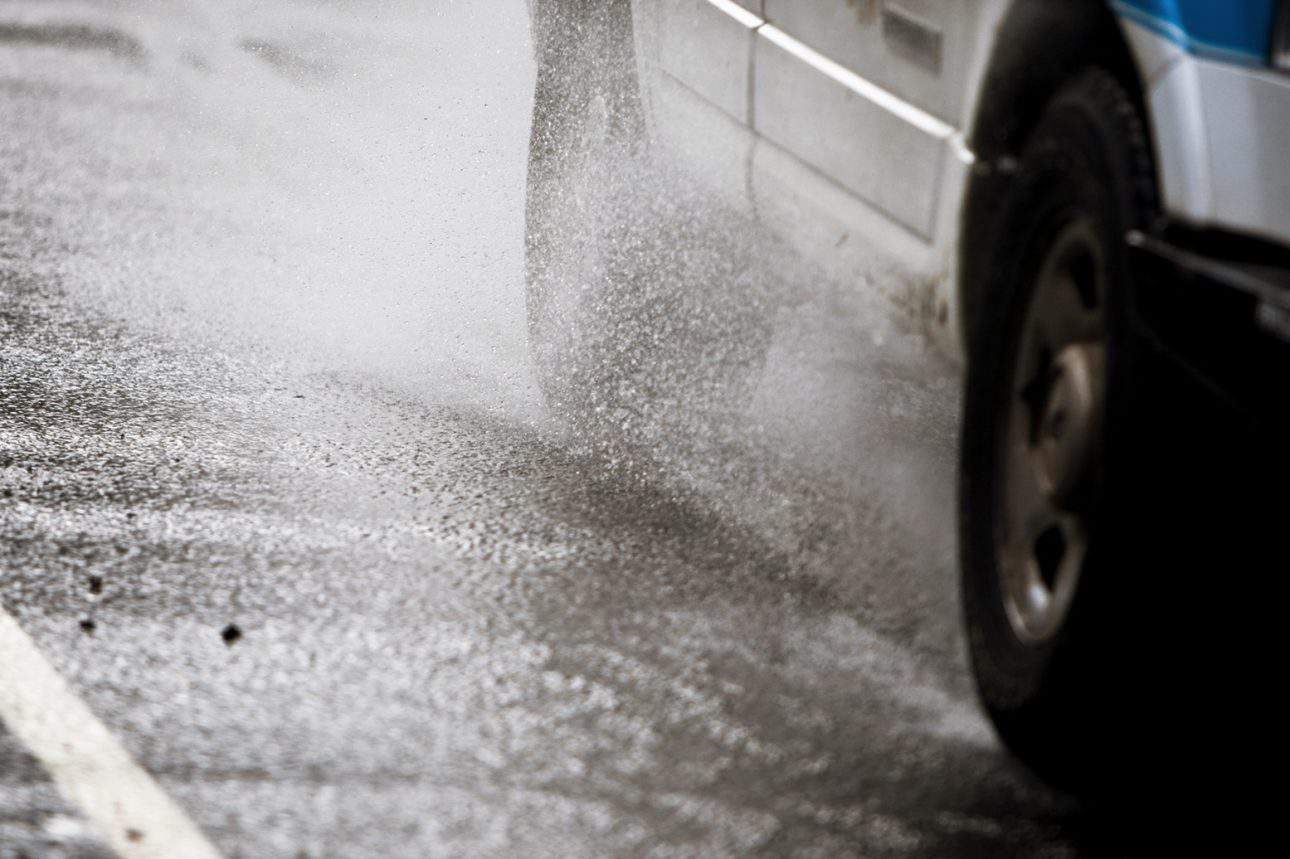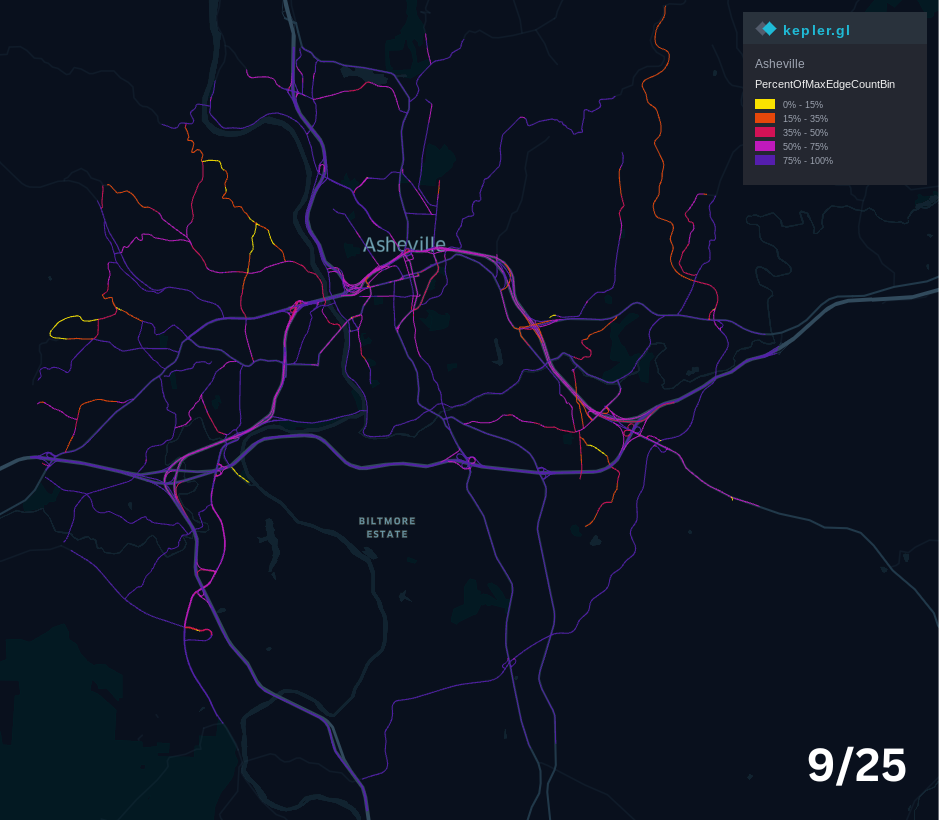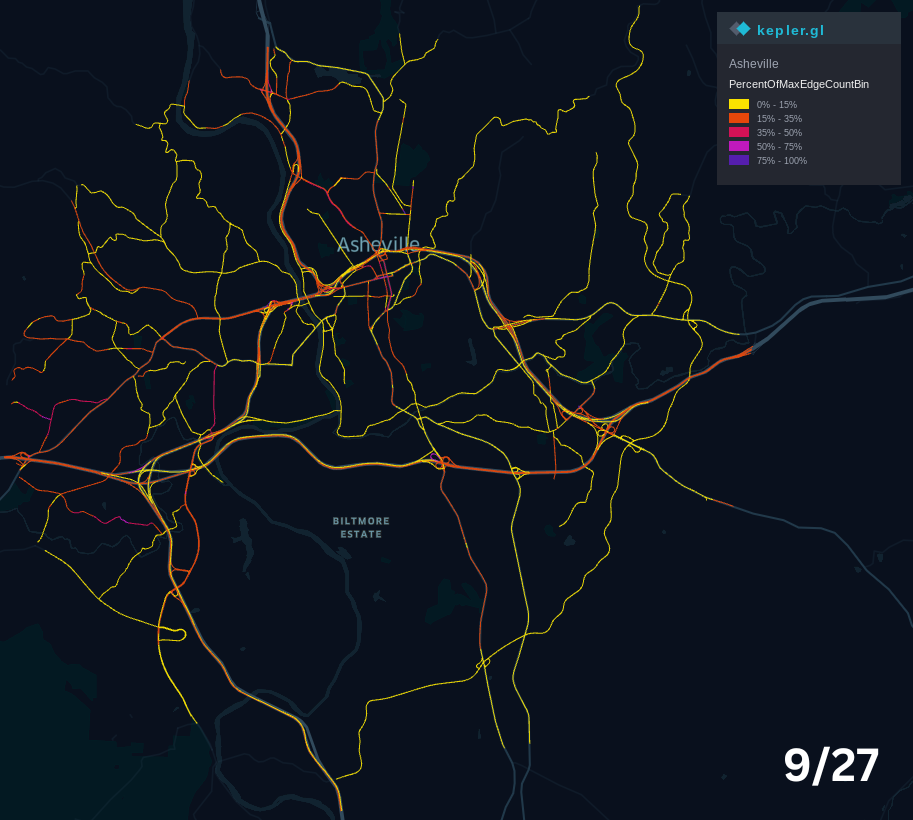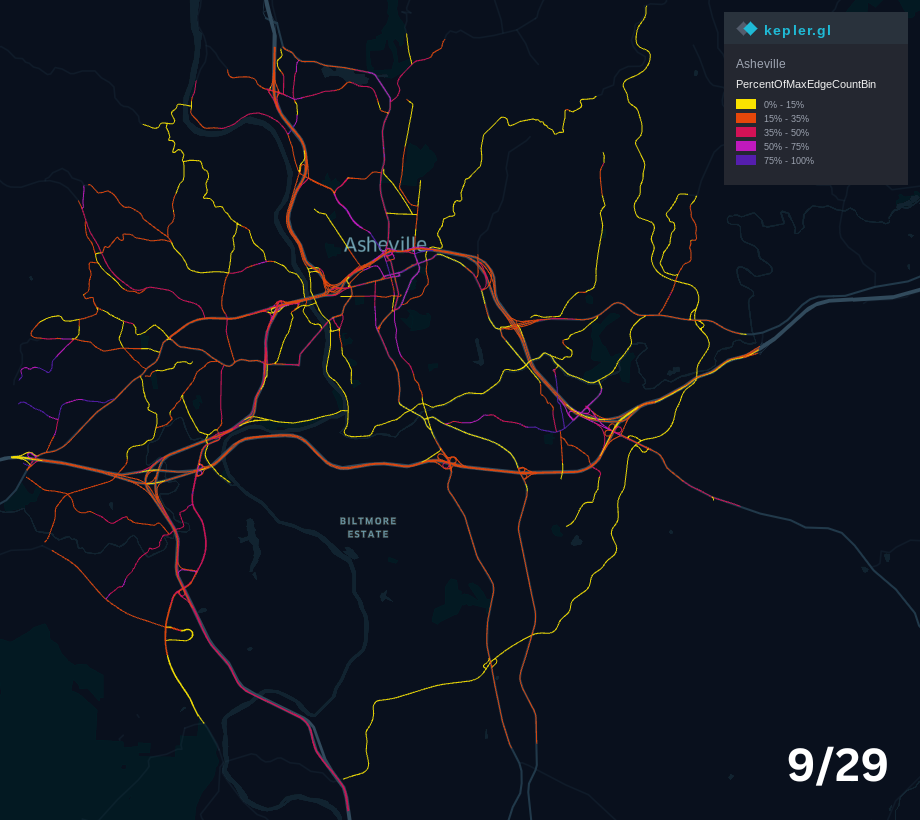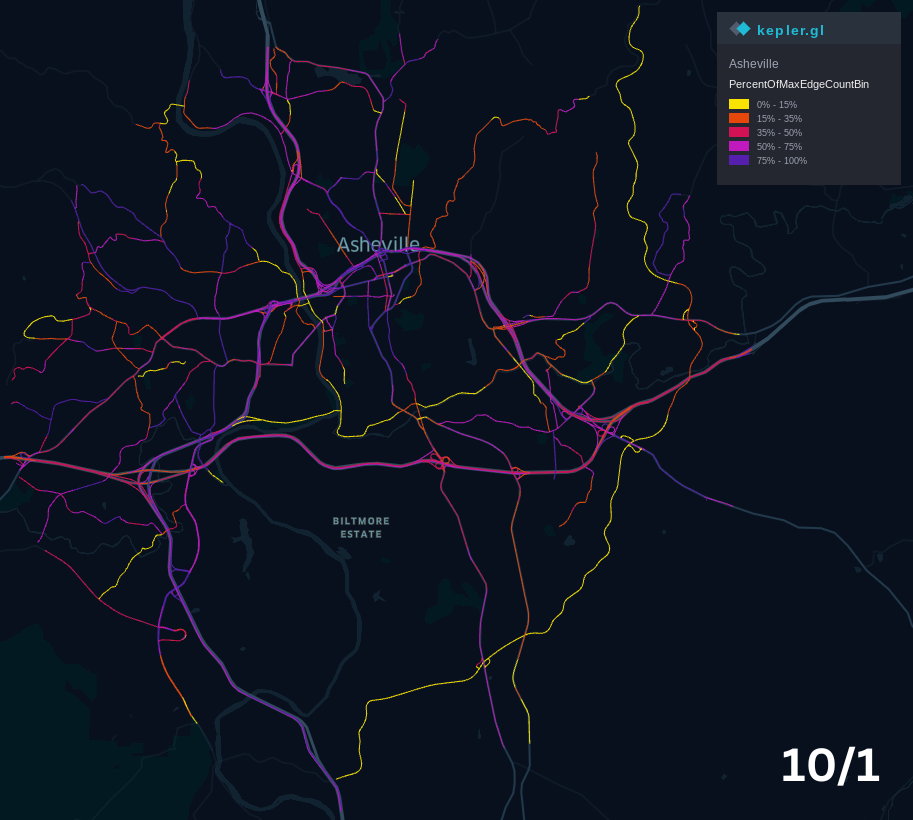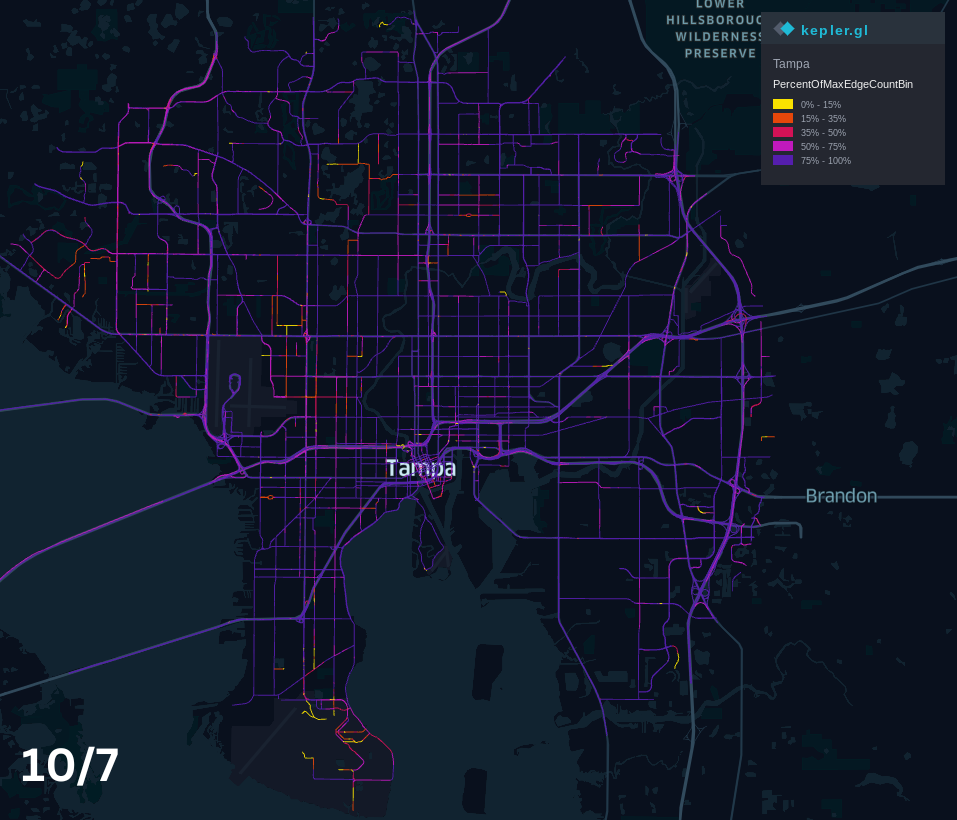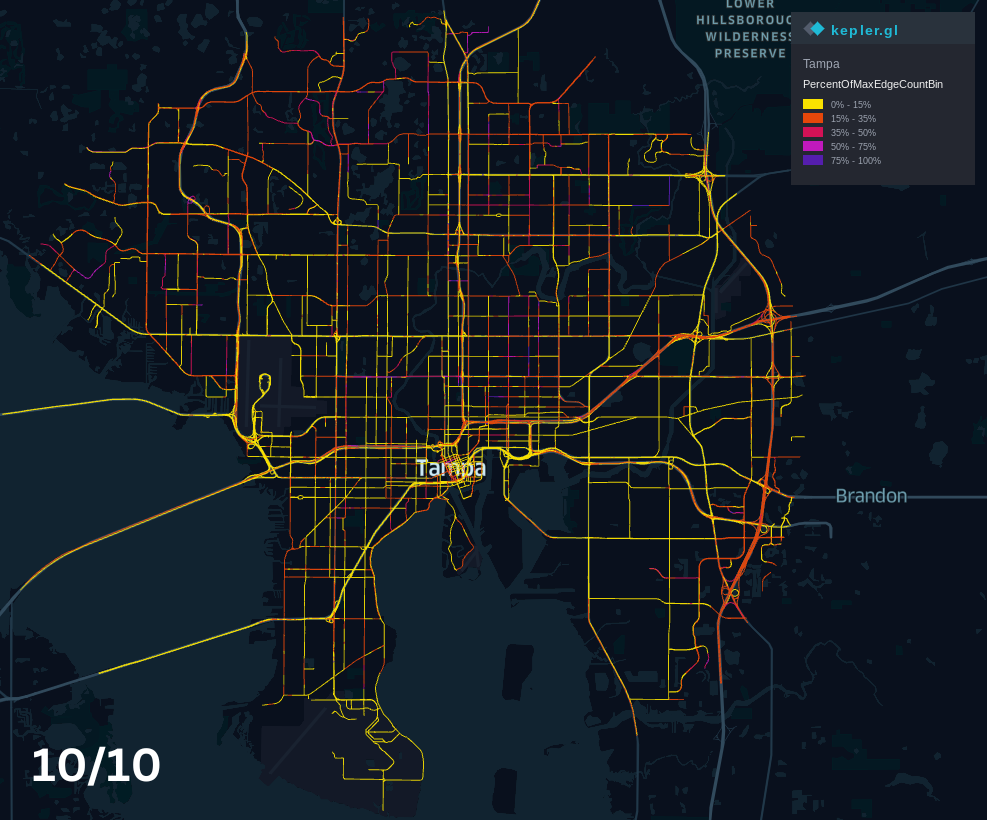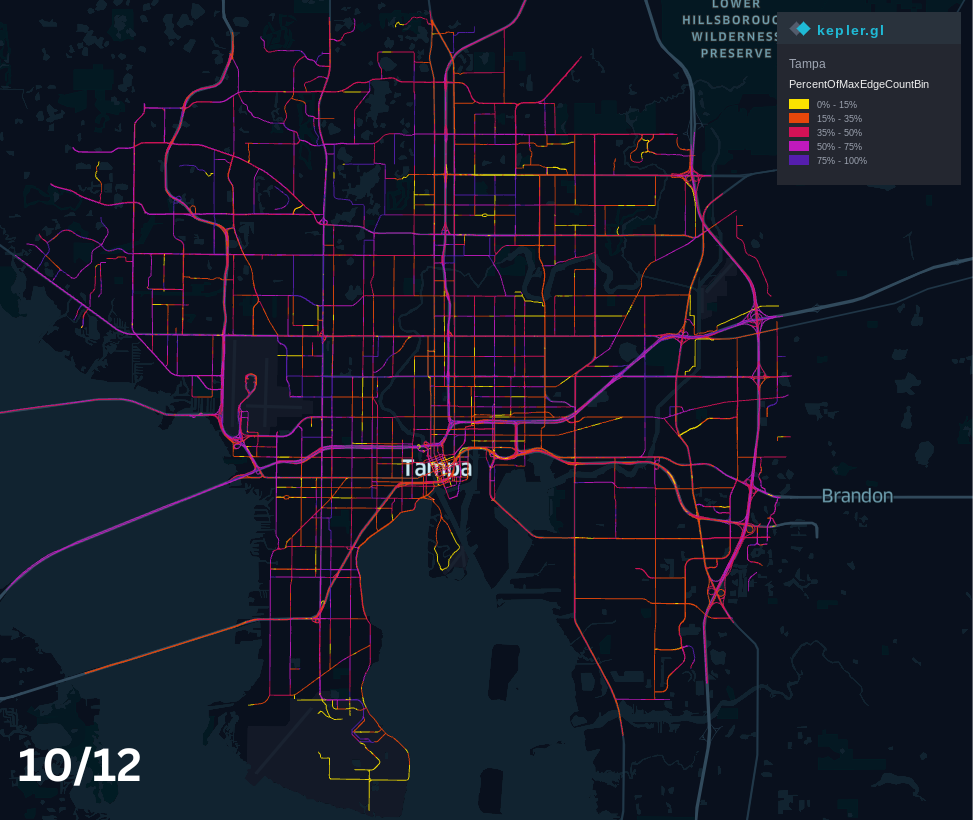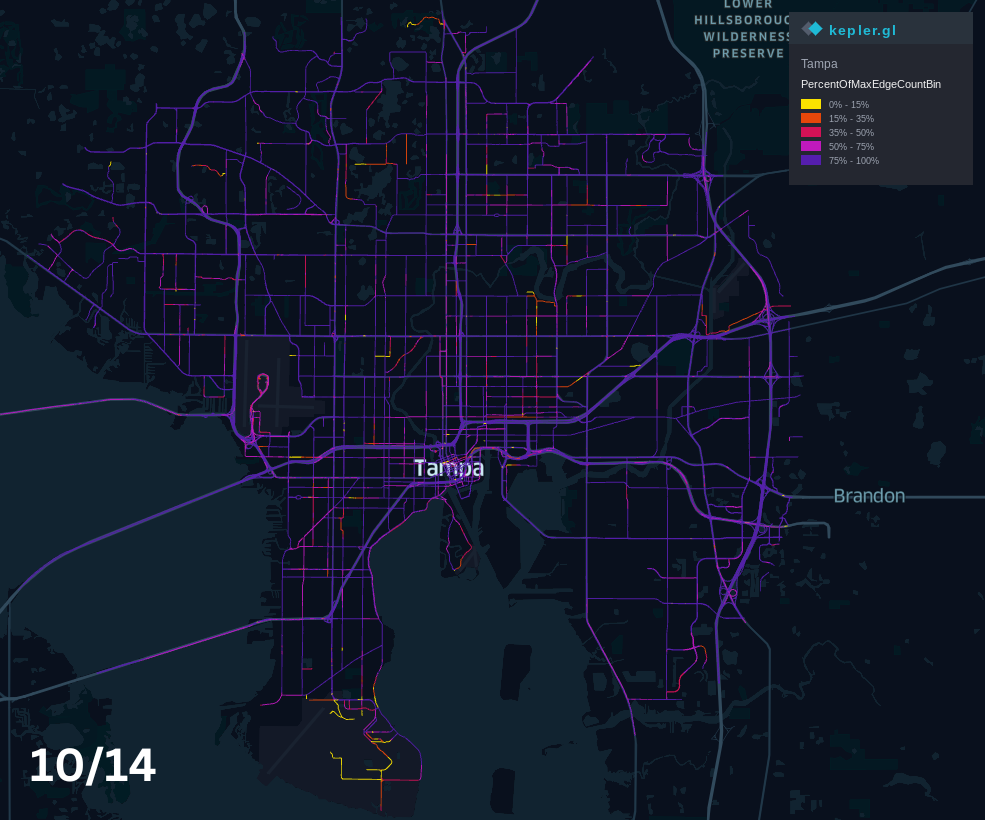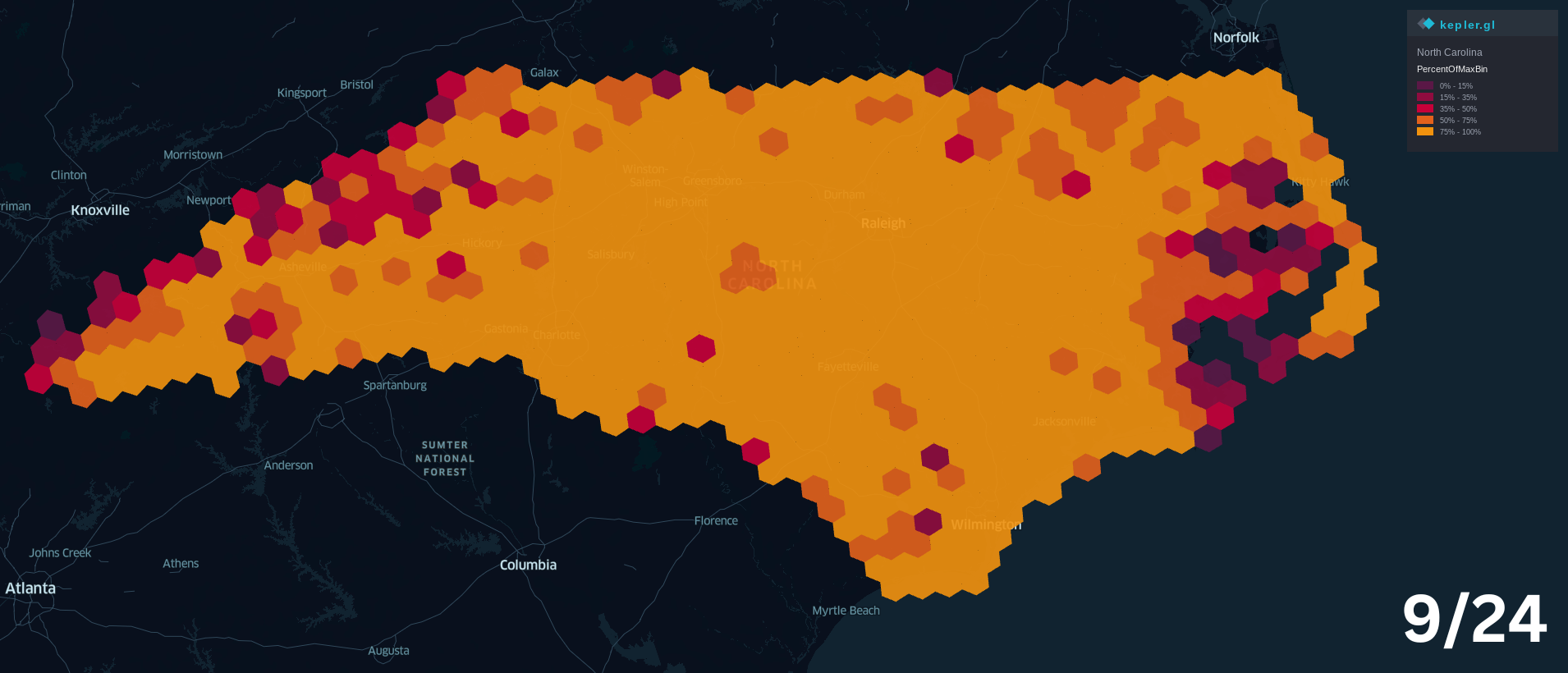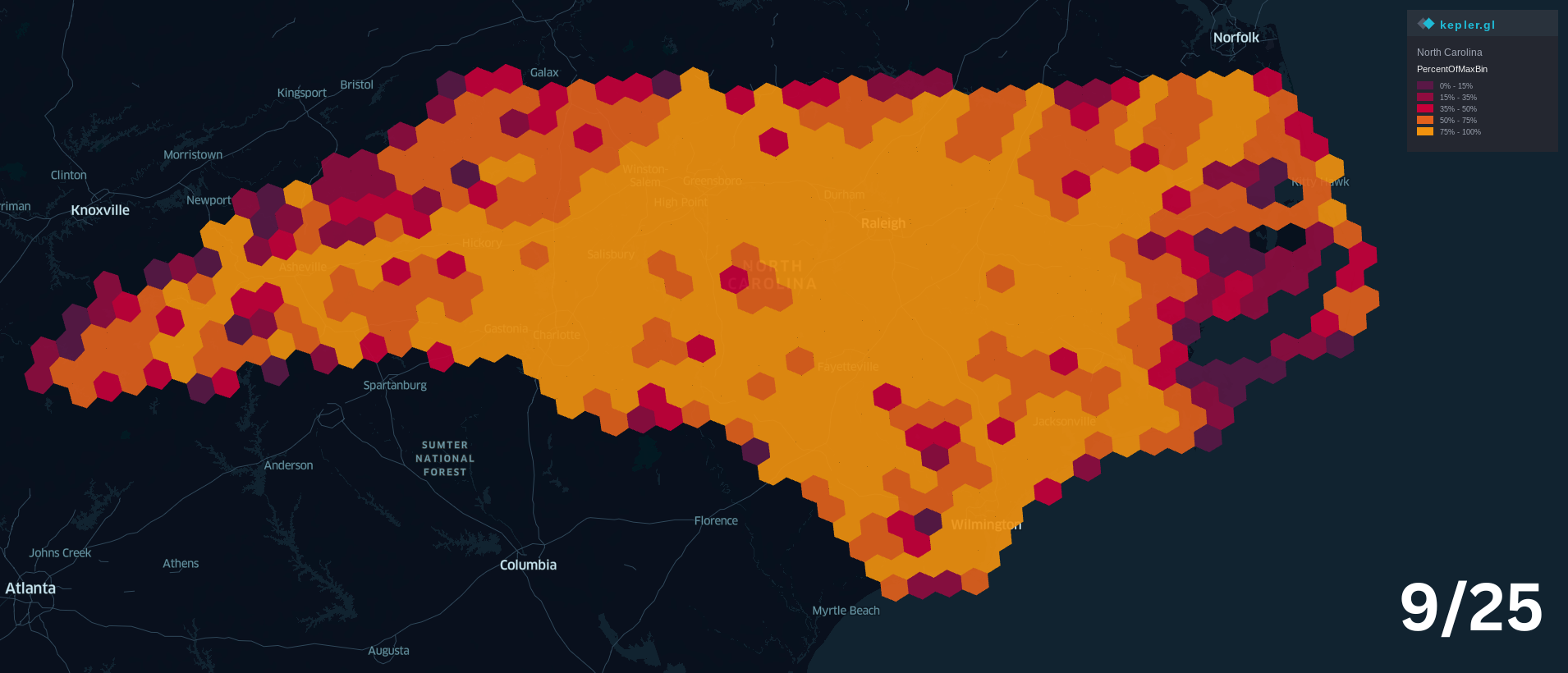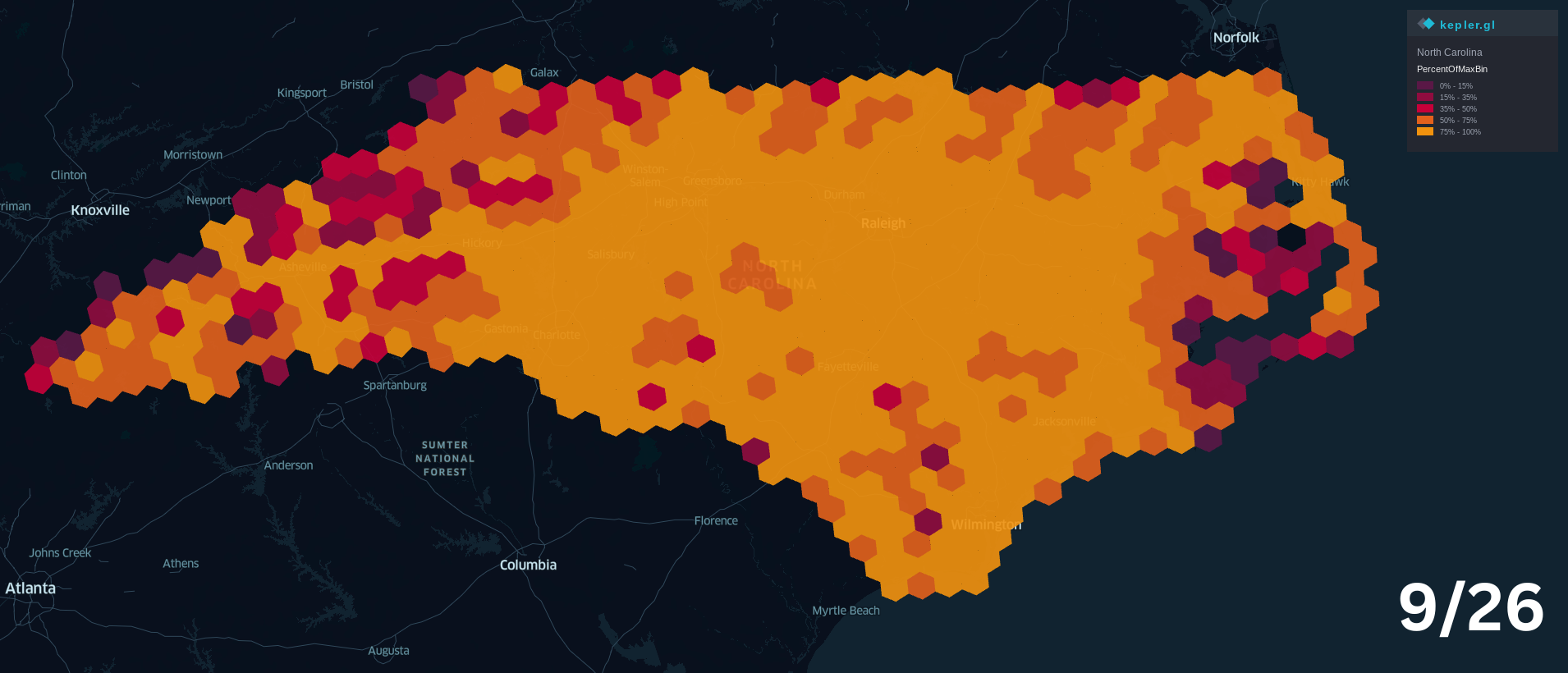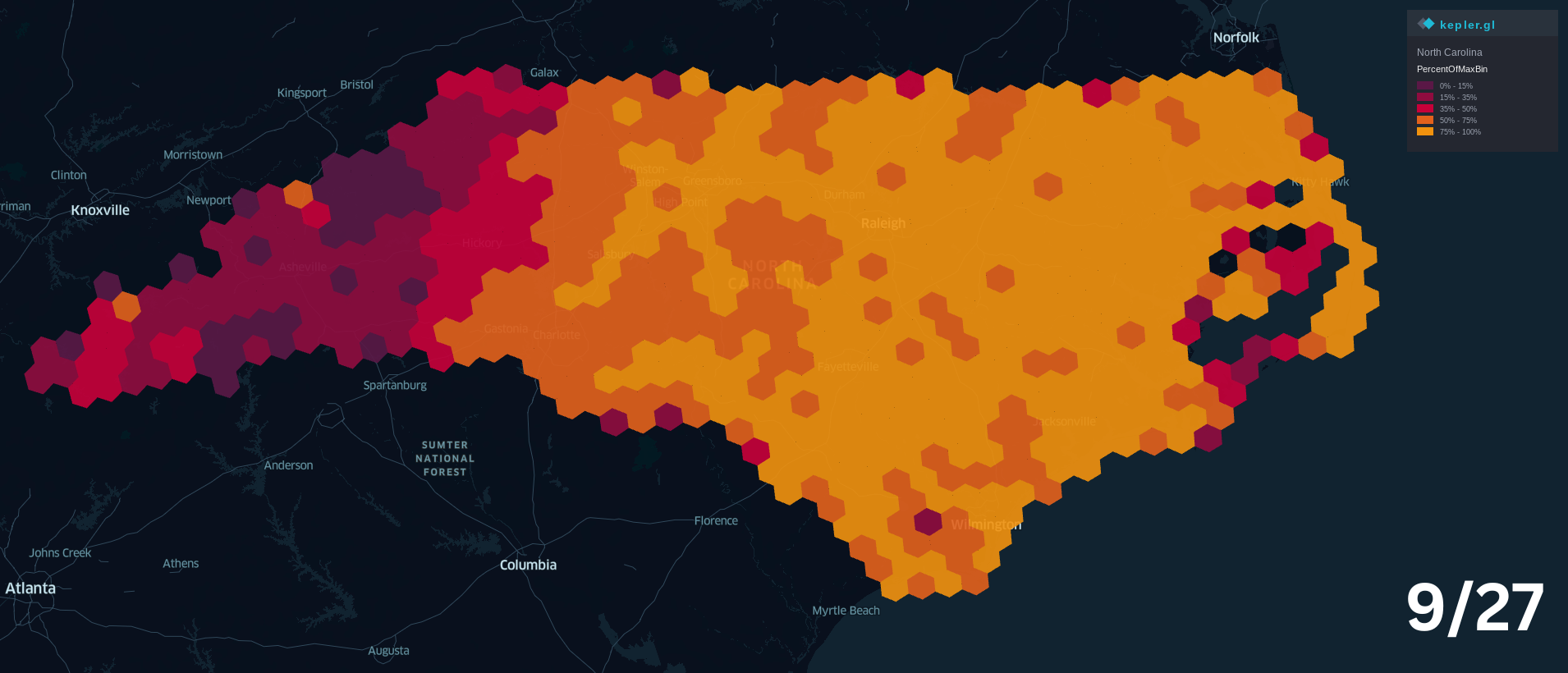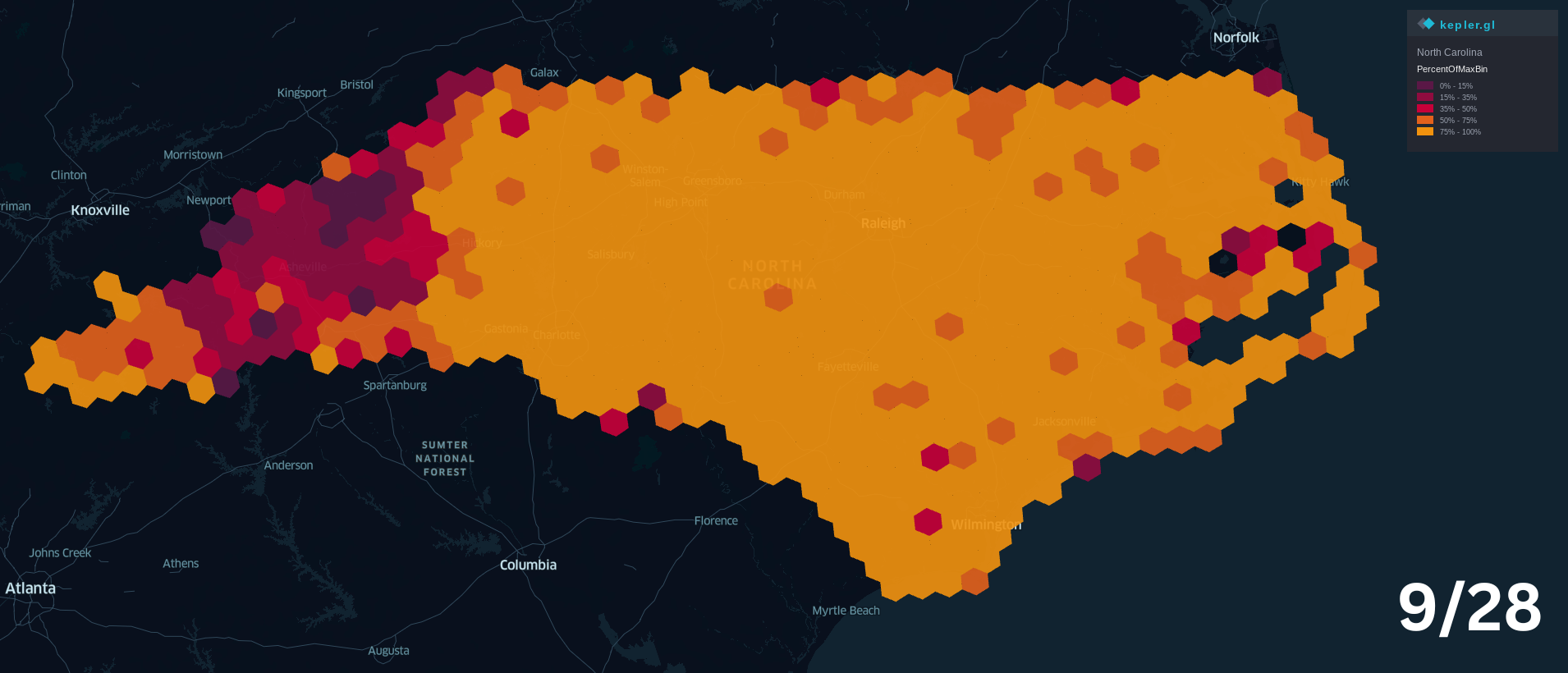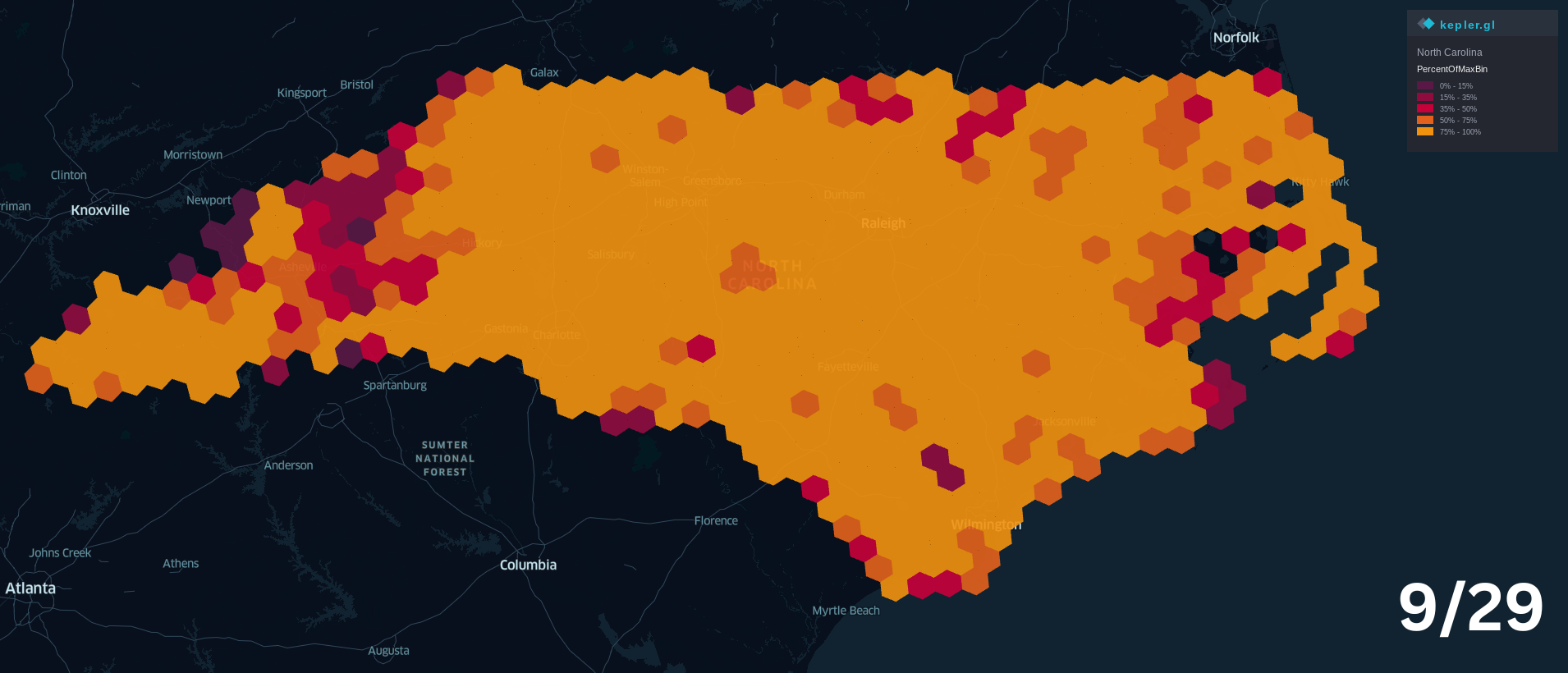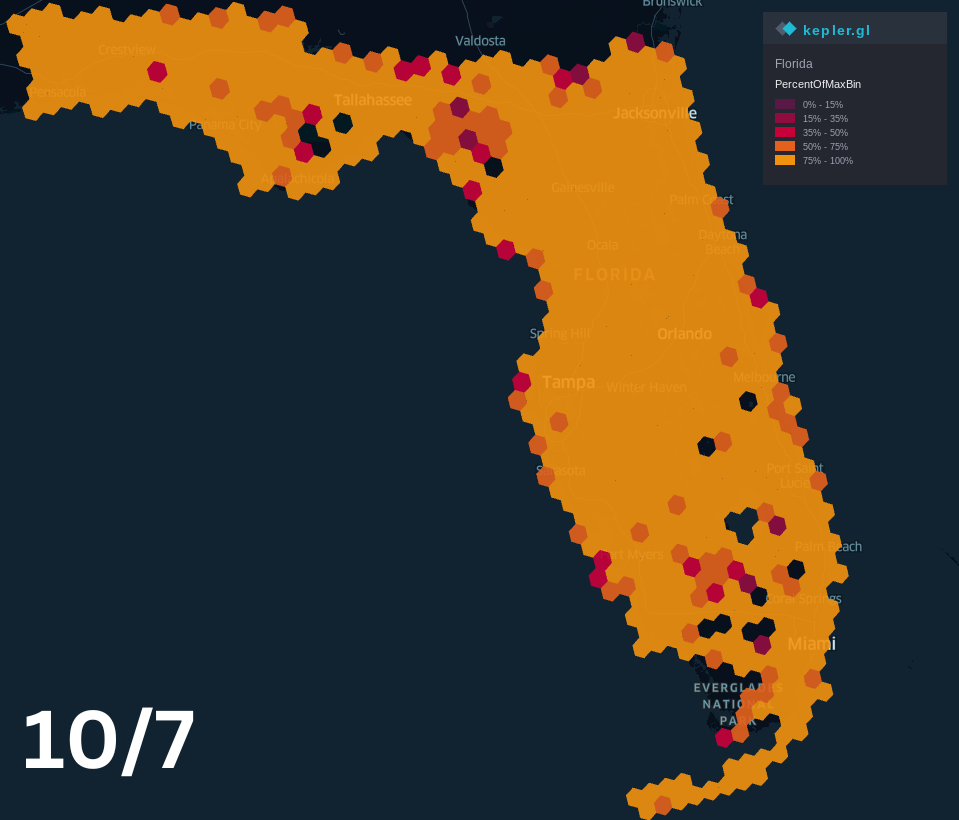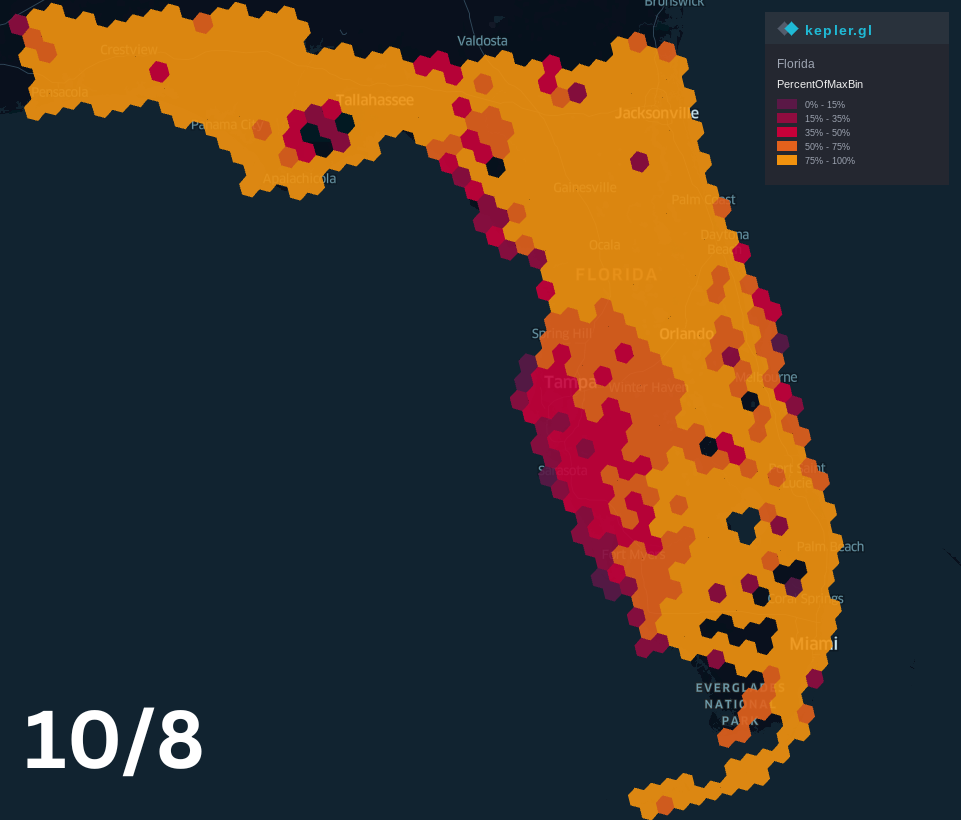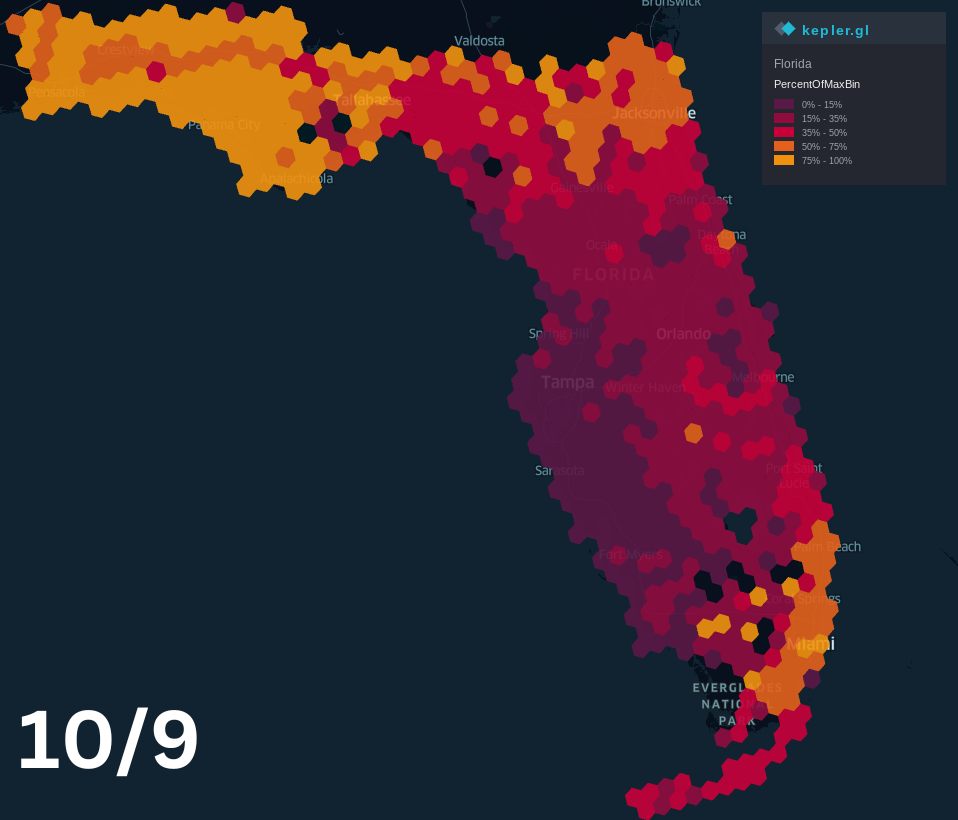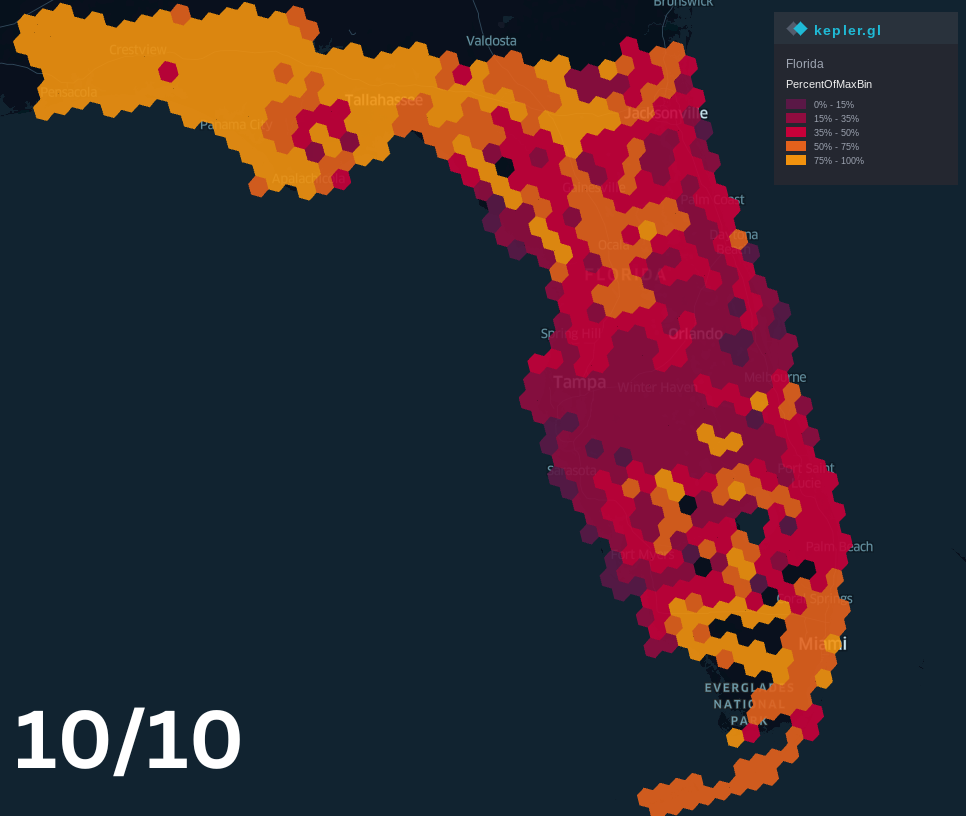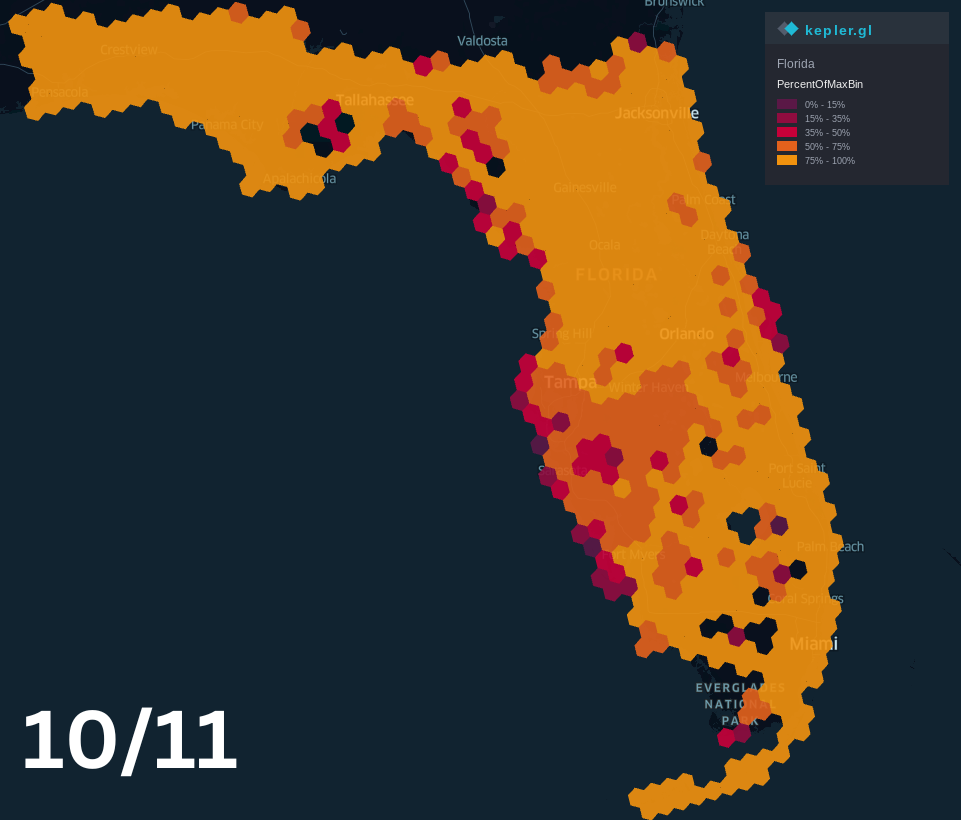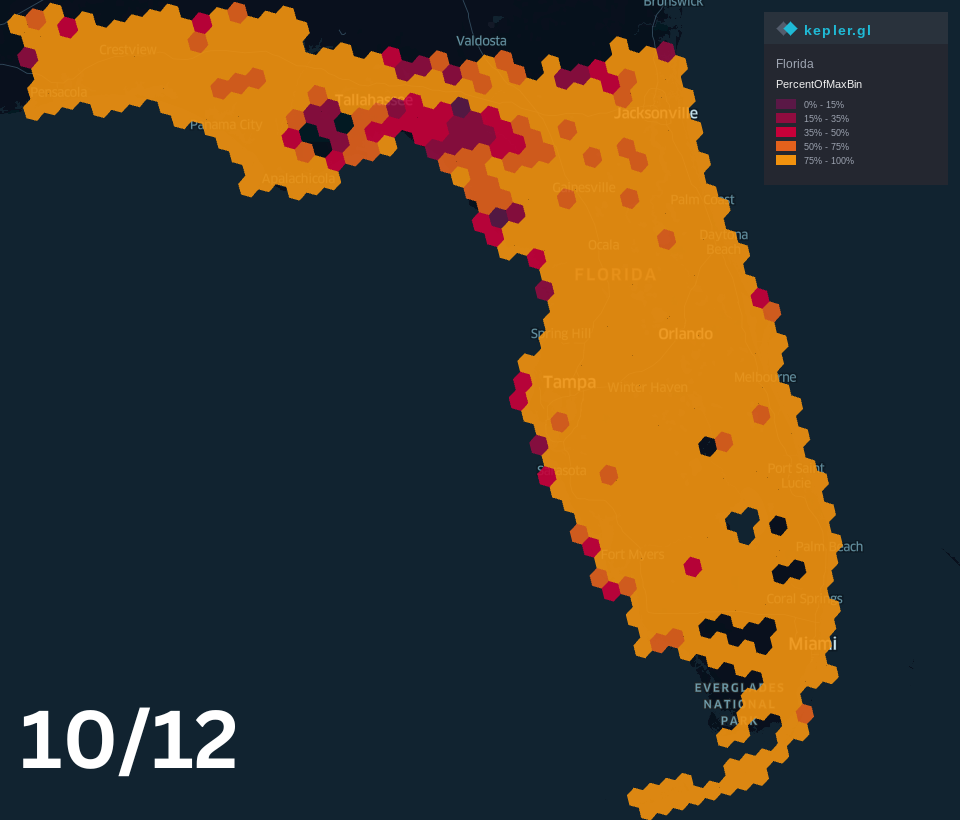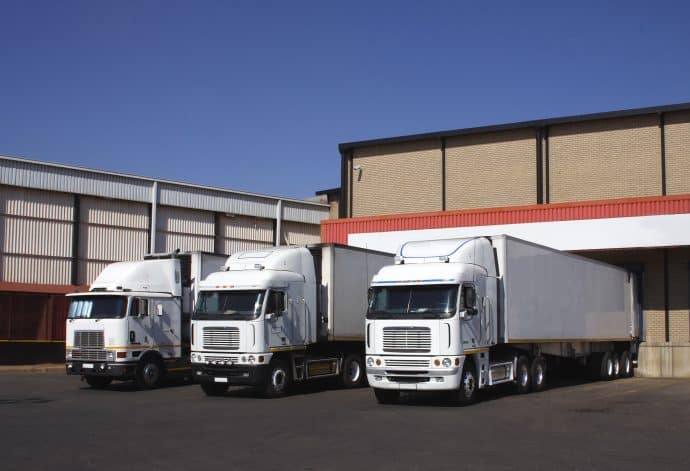Vehicles equipped with Geotab GO devices have their driving activities recorded and then sent electronically to a server. The amount of time it takes for data to be sent from a GO device and then recorded on a server can be considered a proxy for cell connectivity. In other words, when this time is very short, the GO device is likely in a location with good cellular coverage. Conversely, when this time is slow, it may be indicative of poor cell service. Even under normal circumstances, some geographies have bad cell service (this is often true in very rural locations). However, when power is out, locations that typically have good or moderate cell service may suddenly experience much worse connectivity.
Under normal circumstances, it takes less than 30 seconds for a GO device’s data to be recorded. The maps below show the aggregate proportion of GO devices that took three minutes or longer to record data (i.e., six times longer than normal) before, during and three days after extreme weather events. Yellow areas indicate that very few devices have a slow connection, while purple indicates that a high concentration of devices have a very slow connection. The maps show that prior to the weather events, very few areas have high concentrations of devices that take three minutes or longer to connect. However, while extreme weather conditions are occurring, the geographies that are most severely impacted show higher concentrations of slow connection times.
Device connectivity lag time in North Carolina
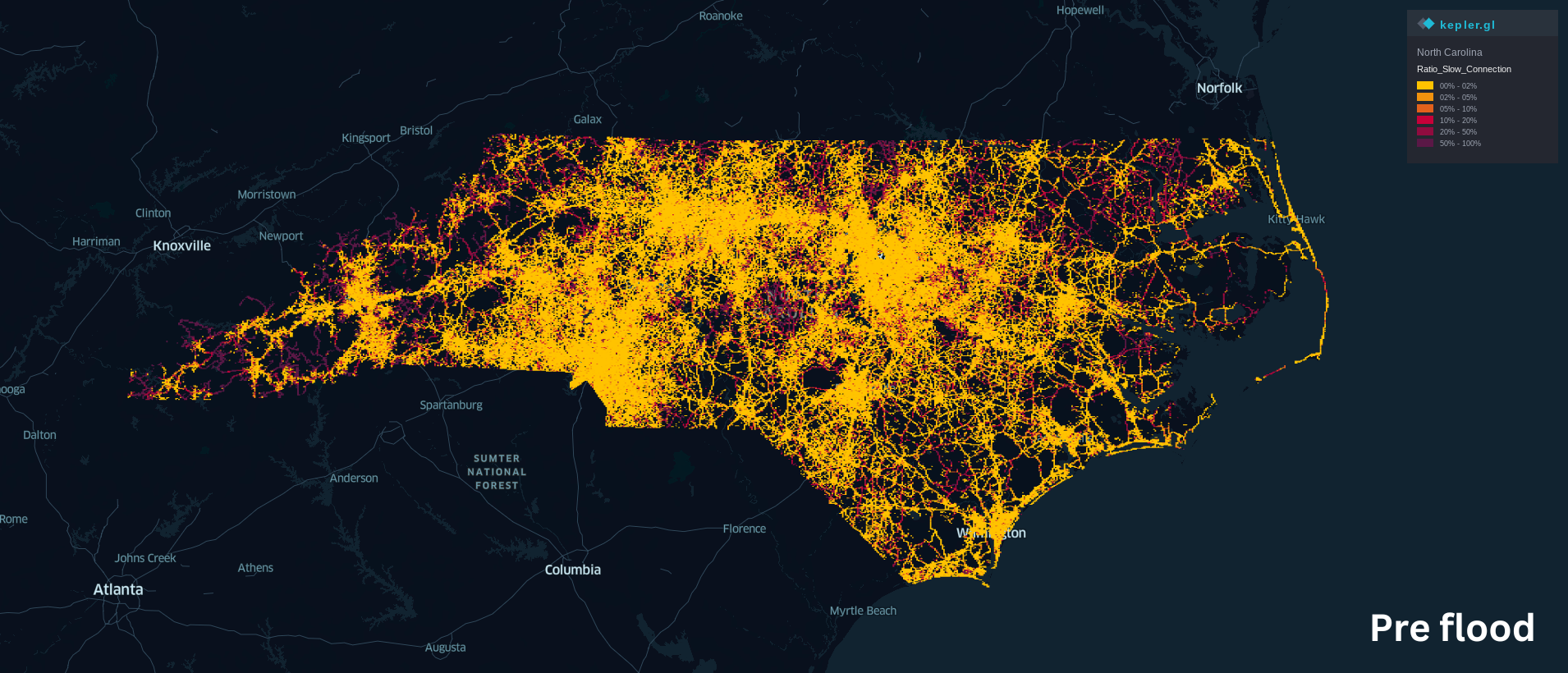
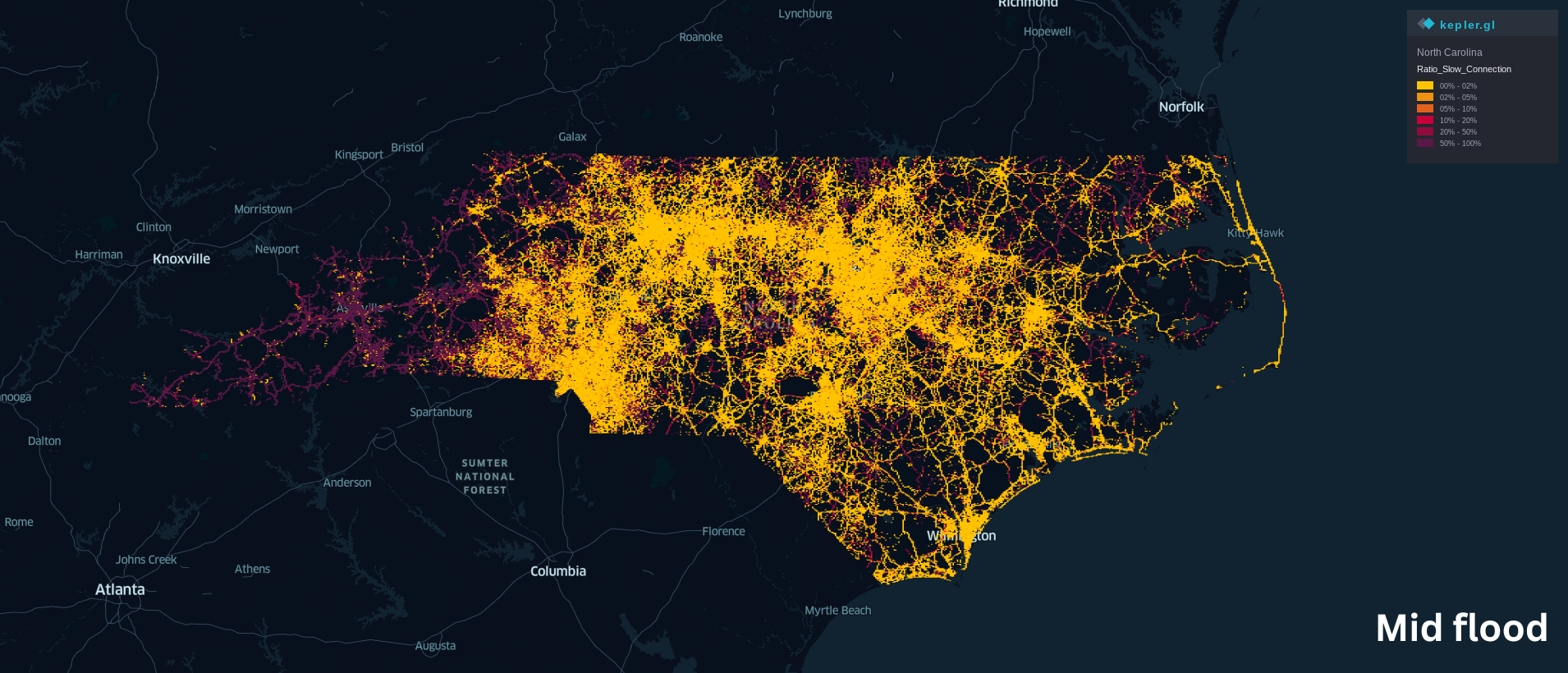
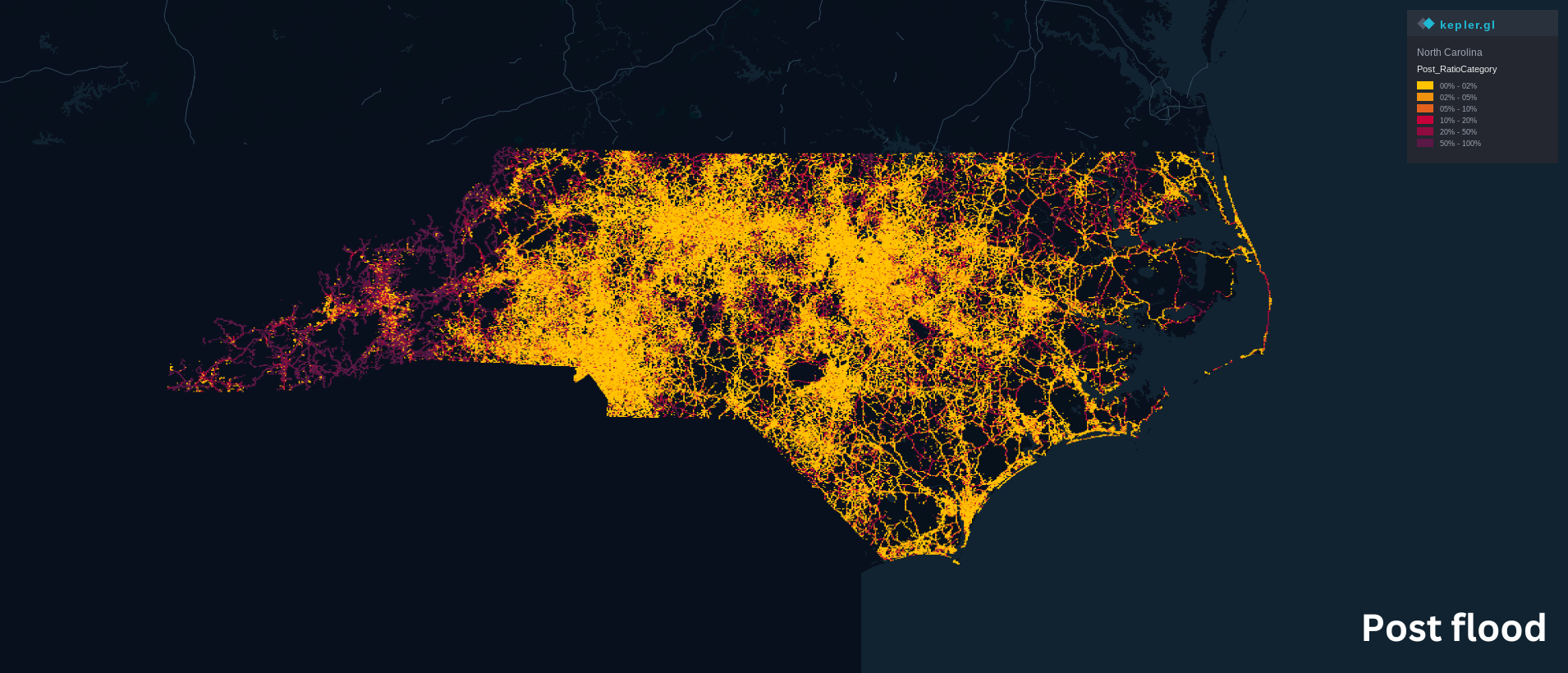
The three maps presented above show the concentrations of GO devices with a connection time of three minutes or longer. The first map, which shows the overall lowest concentration of devices with a slow connection, covers September 25-26. The second map covers September 27-28, which were days of intense flooding in the western part of the state. The map shows that the area around Asheville had a very high concentration of slow connections. The third map covers September 30-October 1 and indicates that even several days after the most intense flooding had subsided, the area continued to have relatively poor connectivity. The area immediately around the city of Asheville’s connectivity has improved compared to the days prior.
Device connectivity lag time in Florida
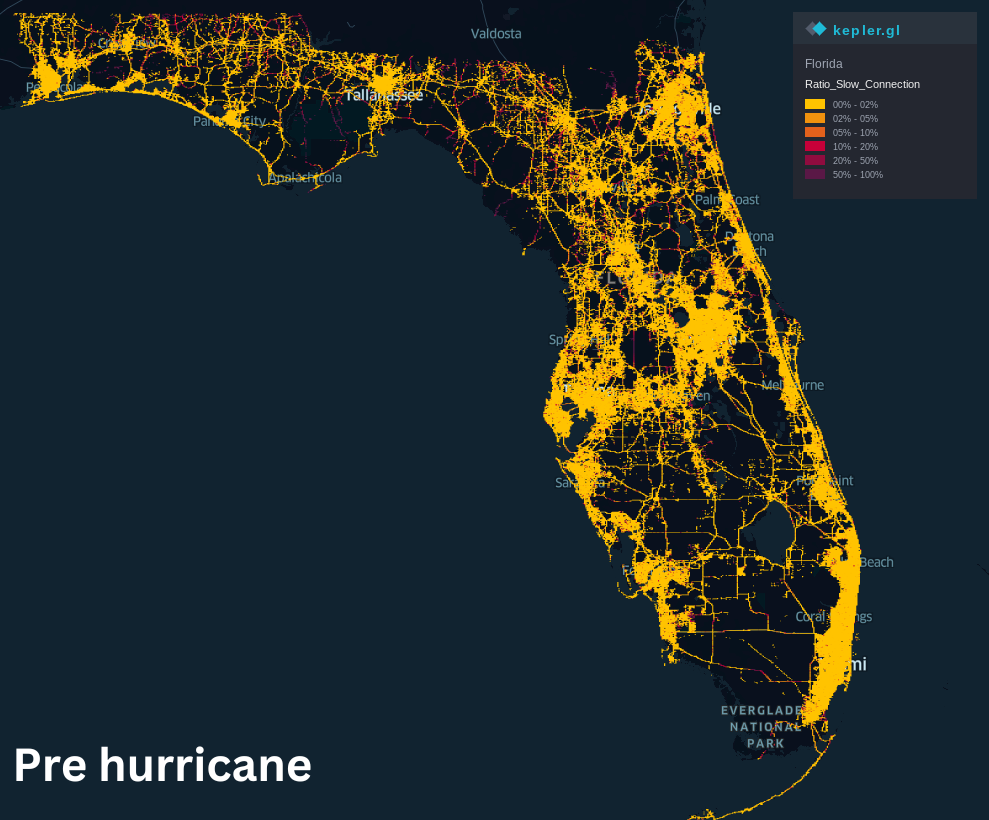
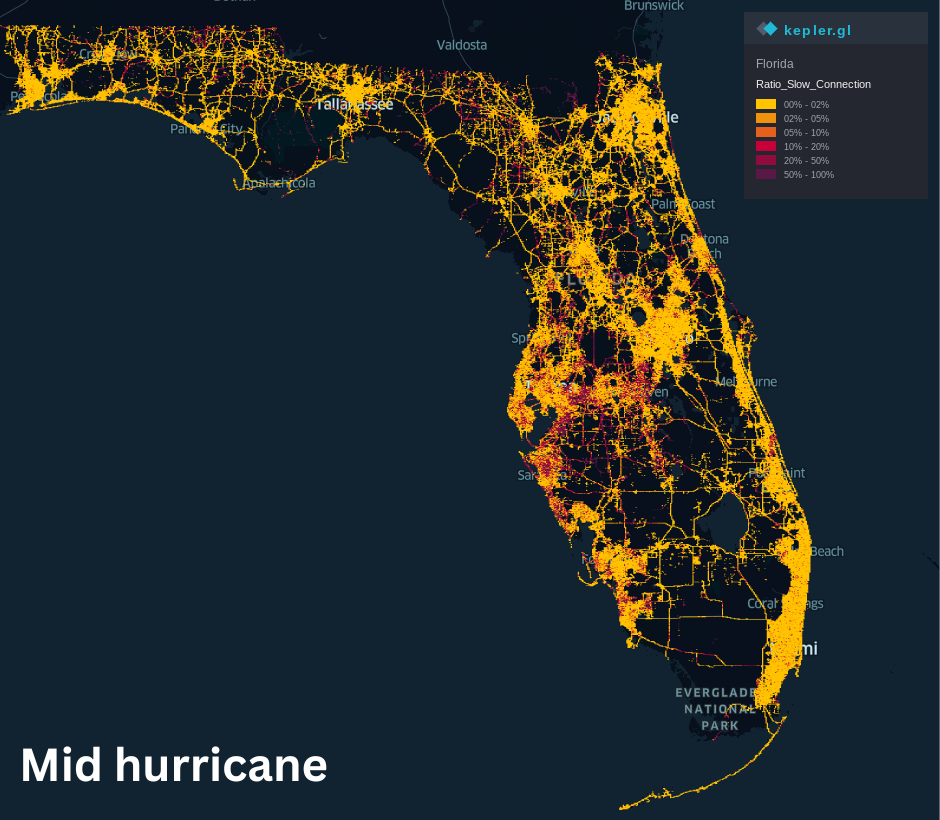
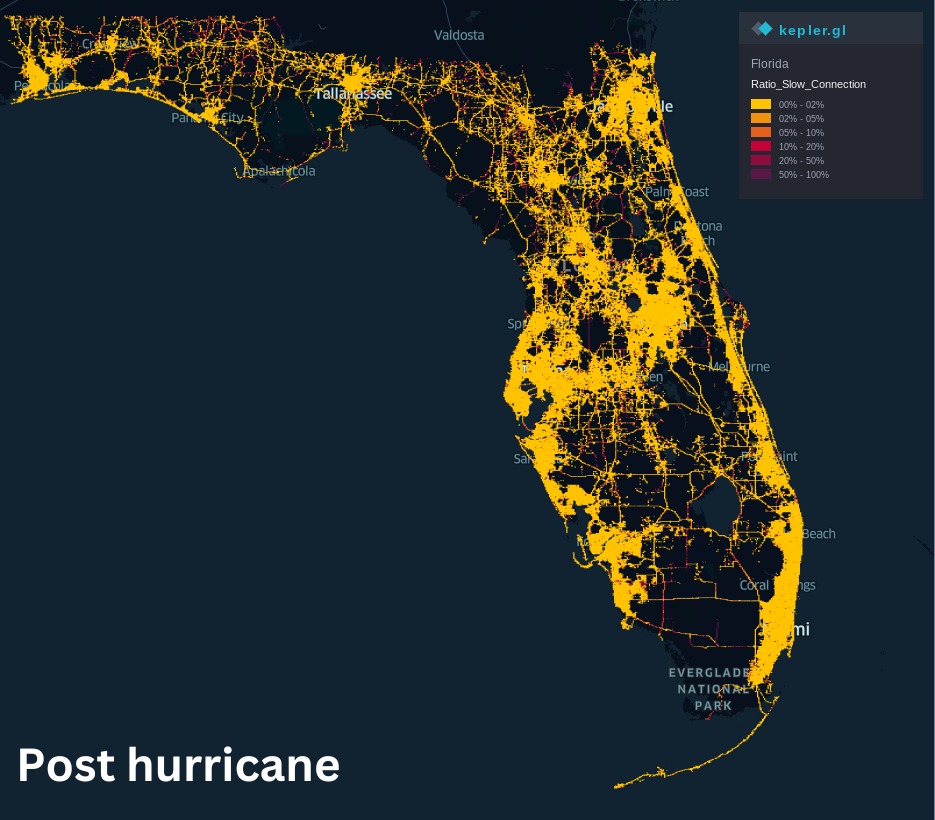
The three maps presented above show the concentrations of GO devices with a connection time of three minutes or longer in Florida. The top left map, which shows the overall lowest concentration of devices with a slow connection, covers October 8-9. The second map covers October 10-11. Hurricane Milton touched down late on the night of October 9 and proceeded to move across the state. The map shows that the area around Tampa (particularly southeast of Tampa) had a high concentration of slow connections. The third map covered October 13-14 and indicates that by this time connectivity had largely returned to normal.


